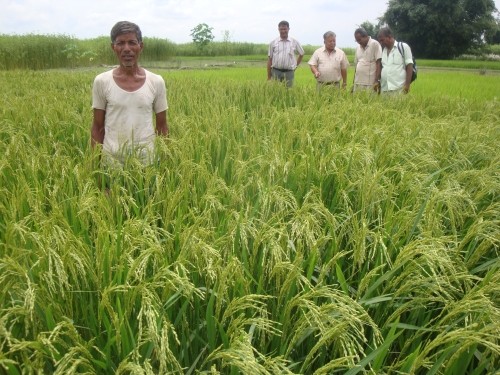
According to the International Labour Organisation, 68% of Nepal's population is employed in the agriculture and forestry sector, accounting for 34% of the GDP. Nevertheless, Nepal struggles to produce an adequate supply of food for its citizens.
Farmers have limited access to improved seeds, new technologies, and market opportunities. Declining agricultural production has depressed rural economies and increased widespread hunger and urban migration. The prevalence of undernourishment in Nepal is 13%
According to WHO figures, for Nepali children who are under-5 years old, 40% are stunted, 29% are underweight, and 11% are wasting. Chronic malnutrition has debilitating effects, such as blindness, brain damage, and infectious diseases, which often can result in lifetime damage.
Despite these difficulties, there are many opportunities to help ensure an adequate food supply for all Nepalis. The Government of Nepal has made food security a national priority. USAID-supported programs already have demonstrated impact by increasing agriculture productivity and incomes of smallholder farmers. As a focus country for the U.S. Feed the Future Initiative, Nepal continues to receive USAID support for scaling up programs that sustainably increase agricultural productivity and facilitate access to markets. USAID also will support improved nutrition by increasing the production and consumption of nutritious food products and improving hygiene and access to safe water.
- USAID supported over 85,000 smallholder farmers in 26 remote, conflict-affected districts to adopt improved farming techniques. USAID’s work has increased the incomes of 430,000 rural farmers (54 percent women) by over 50 percent.
- USAID helped flood-affected communities improve farmer productivity and incomes, rehabilitate essential infrastructure such as irrigation systems and bridges, and build resilience against future natural disasters. For example, 4,400 vegetable farmers increased their household incomes by more than 300 percent over several crop cycles as a result of improved agricultural technologies such as integrated pest management, post-harvest storage, and marketing.
- USAID trained over 49,000 households on improved maize production technologies in 20 remote hill districts. USAID’s work resulted in the production of more than 1,000 kilograms of improved maize seed covering over 50,000 hectares of land, thereby increasing incomes and food security for poor, disadvantaged farmers. Similarly, USAID supported the Government of Nepal in releasing four new drought-tolerant maize varieties, which have lowered crop loss and contributed to higher maize yields.








Comment
Make a general inquiry or suggest an improvement.